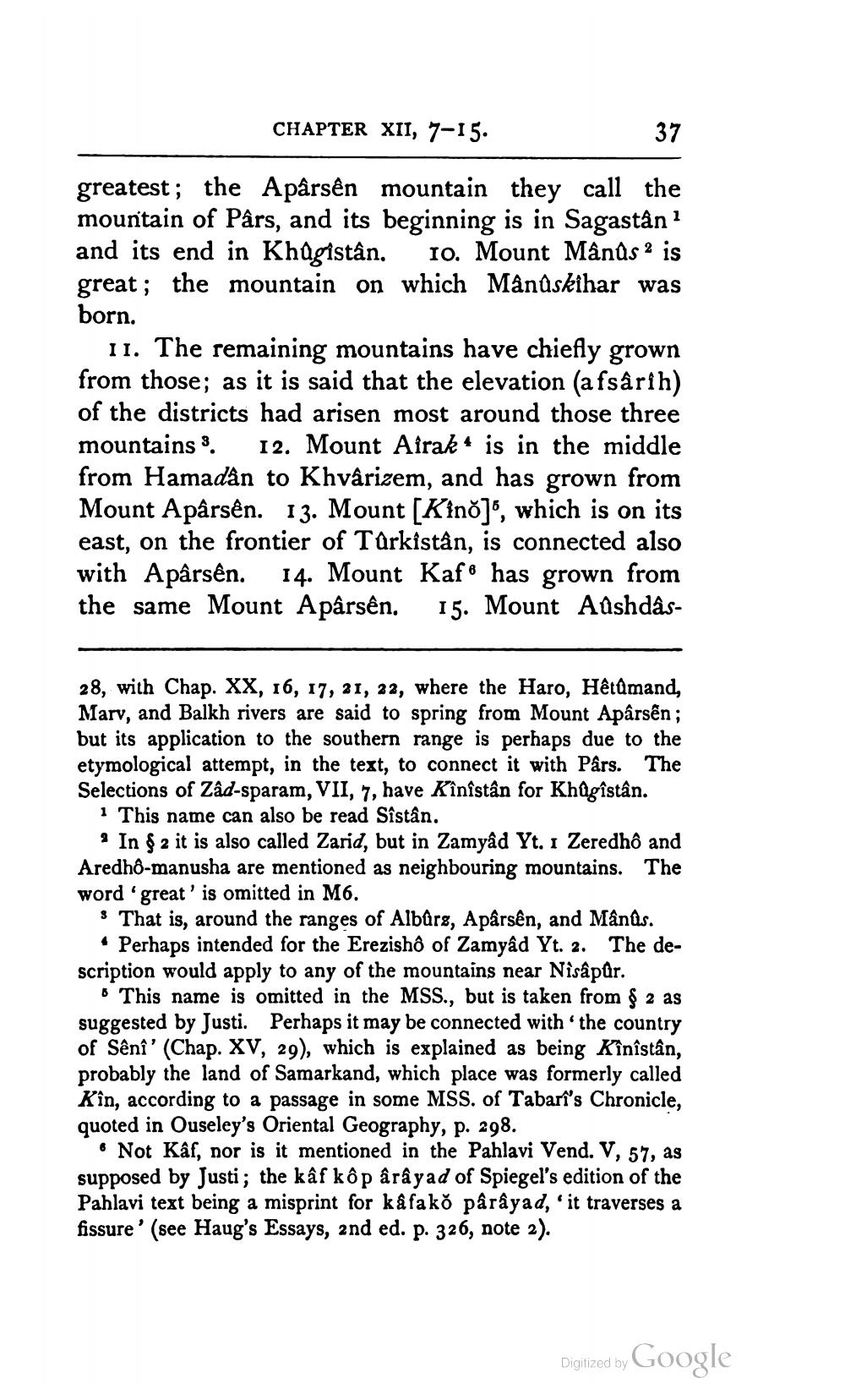________________
CHAPTER XII, 7-15.
37
greatest; the Apârsên mountain they call the mountain of Pârs, and its beginning is in Sagastân? and its end in Khagistân. 10. Mount Mânūs is great; the mountain on which Månûskîhar was born.
11. The remaining mountains have chiefly grown from those; as it is said that the elevation (afsârih) of the districts had arisen most around those three mountains 3. 12. Mount Airak 4 is in the middle from Hamadân to Khvârizem, and has grown from Mount Apârsên. 13. Mount [Kino], which is on its east, on the frontier of Tûrkistân, is connected also with Apârsên. 14. Mount Kafe has grown from the same Mount Apârsên. 15. Mount Aushdâs
28, with Chap. XX, 16, 17, 21, 22, where the Haro, Hêtûmand, Marv, and Balkh rivers are said to spring from Mount Apârsên ; but its application to the southern range is perhaps due to the etymological attempt, in the text, to connect it with Pârs. The Selections of Zâd-sparam, VII, 7, have Kînîstân for Khûgîstân.
1 This name can also be read Sîstân.
. In § 2 it is also called Zarid, but in Zamyâd Yt. 1 Zeredhô and Aredhô-manusha are mentioned as neighbouring mountains. The word 'great' is omitted in M6.
s That is, around the ranges of Albürs, A pârsên, and Mânûs.
• Perhaps intended for the Erezishổ of Zamyâd Yt. 2. The description would apply to any of the mountains near Nisâpûr.
This name is omitted in the MSS., but is taken from § 2 as suggested by Justi. Perhaps it may be connected with the country of Sênî' (Chap. XV, 29), which is explained as being Kînîstân, probably the land of Samarkand, which place was formerly called Kîn, according to a passage in some MSS. of Tabari's Chronicle, quoted in Ouseley's Oriental Geography, p. 298.
Not Kâf, nor is it mentioned in the Pahlavi Vend. V, 57, as supposed by Justi; the kâf kôpârâyad of Spiegel's edition of the Pahlavi text being a misprint for kâfako pârâyad, 'it traverses a fissure' (see Haug's Essays, 2nd ed. p. 326, note 2).
Digitized by
Digitized by Google




